Review: Discovered in The Department of Lost: Aeroclub 1/48 Royal Aircraft Factory F.E.2b
A model that survives from the pre-Jurassic days of 1996.
The Airplane:
Of all the awful airplanes the Royal Flying Corps went to war with, it is a tossup whether the F.E. series or the B.E. series can take the title of Worst of All. The two had difficulty getting out of their own way, and were considered "meat on the table" to any German fighter pilot who ran across them, yet it was a crew from 25 Squadron who turned the tables on Baron Manfred von Richtofen on August 24, 1917, creasing his skull with a Lewis round as he dove to attack them and went on to crash land; the Red Baron never really fully recovered from that wound, and it is said that the effects of it on his judgement contributed to his taking the chances that led to his death eight months later.
The F.E.2 series (it stood for "Farman Experimental," not "Fighting Experimental" as many have believed) was the epitome of the World War I "birdcage," a two-seat pusher with a forest of struts and a webbing of wires, with a top speed somewhere around 85 m.p.h. and maneuverability that can only be called "clumsy." Yet in 1915 and 1916 - until the introduction of the Albatros scout flown by pilots following Boelcke's Dicta - it held its own and contributed to the eradication of the "Fokker scourge." When one considers that the observer had to climb out of the cockpit and stand on the sill to aim the rear-firing Lewis gun - fully exposed to the elements and enemy fire, without a safety belt - one gets a sense of the gallantry of the young men who flew it, so many of them going to their deaths in it in the skies over the Somme Valley in 1916 and 1917; it is a shame the airplane did not measure up to the men who flew it.
Beginning in late 1916, when the "Fee" had been shown to have no chance at all in the daylight skies over the Western Front, it became a night bomber, attacking German supply and ammo dumps behind the lines, and making life miserable for the flyers of the German Air Service as it attacked their airfields with near-total impunity. Squadrons were still equipped with the type for this role as late as early 1918 before it was finally replaced by the de Havilland D.H.4.
Whatever its technical and performance shortcomings, the F.E.2b is truly one of the immortals of the first war in the air, and fully worthy of being memorialized in kit form.
The Kit:
Aeroclub was been known for many years as one of the best vacuform kit manufacturers around. The F.E.2b, first released in 1995, was their first essay into a full limited-run injection molded kit in 1/48.
Looking at the ten light tan plastic parts, one can see the vacuform heritage. The surface detail is a bit heavy, but having built two of these, I can assure you that it looks fine under a coat of paint. The sprues are heavy, as are many limited-run kits, and it is a good idea to cut the parts free with a razor saw.
The struts, engine, weapons and landing gear are all made of white metal, of which Aeroclub was the best manufacturer in the world. There is a minimum of flash on all metal parts.
One very nice bit is the inclusion of a vacuformed jig for the assembly of the tail struts, which is one place where even an experienced modeler would have difficulty.
The decals provided are a bit dark for RFC decals of the First World War, but are entirely useable if one elects to modify the airplane into a night bomber. What is there are markings for "Zanzibar No. 9"/"The Scotch Express," an airplane that arrived on the front in late April 1916 and by mid-May had been shot down and captured by the Germans without apparently inflicting much damage on the enemy prior to its departure from British service.
This is a model for advanced World War 1 modelers, due to the difficulty of assembly and rigging, and I strongly suggest you find the Windsock Datafile on the F.E. series before commencing work on the model.
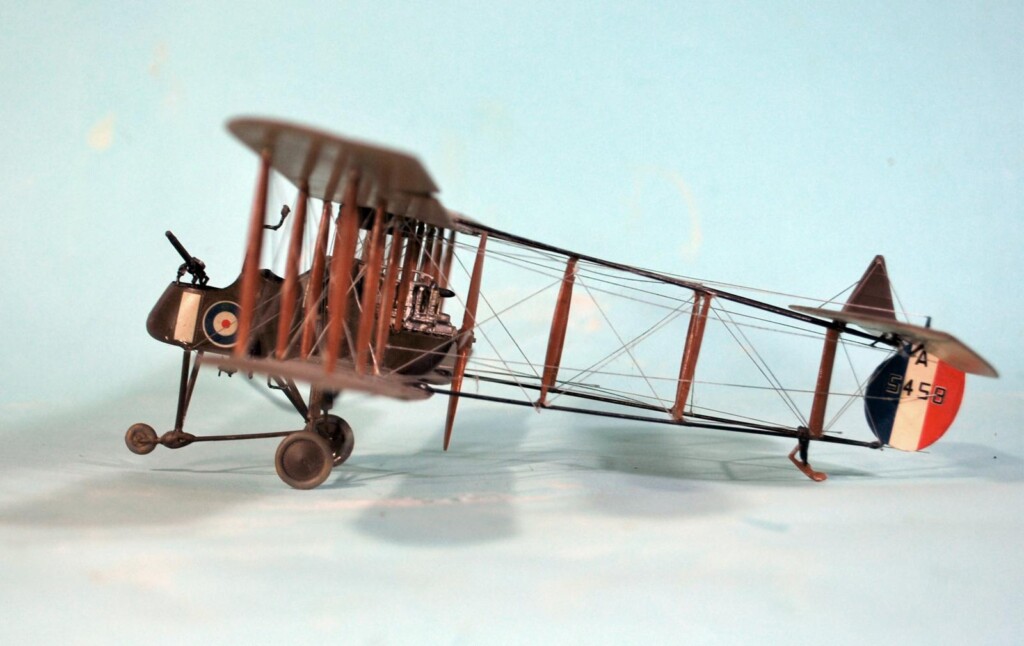
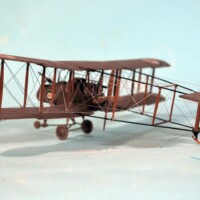
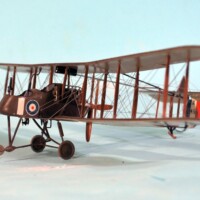

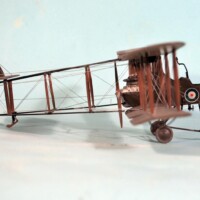
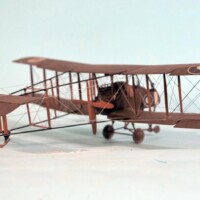
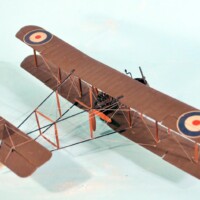

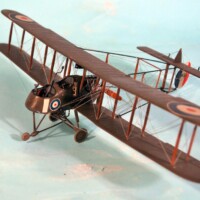
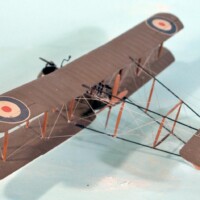
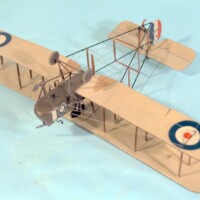
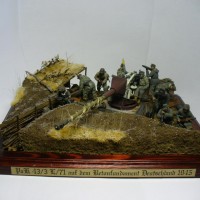


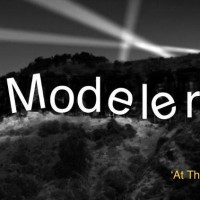
This is one of those airplanes that if you can pull it off, will make a nice addition to one's model collection. Biplanes are difficult enough to rig , especially if it's not something you do often. This aircraft, yikes. Of course like all rigging, it's just one foot in front of the other, but oh yeah, I could see many hours and new swear words being used.Anyway, this look great Tom and definitely a fine addition to your personal collection.
Yes, there were many new swear words invented and adopted. 🙂
🤣🤣🤣🤣. Want some new ones?
Beggars belief that our corps forbears went near these things...but they did. Fast forward a century and we have the AH64E. It's interesting (or sickening depending on your viewpoint ) that the great unwashed still don't realise the Army fly, and still don't accept that the RFC was Army. A friend flying on Op Granby had to explain to a young lady that her relative who was a captain in the RFC in 1916 was not, in the RAF but the Army...and they have been hell bent on grounding us ever since...just don't mention the astronaut🤣🤣🤣. Nice job Tom, I think rigging a Tiger moth was a pain so this...fair play❤️😎. A beauty.
Well done Tom. Too many wings and wires for me and I admire those that pull it off
Hi Tom - that is a masterpiece of rigging. It's one of the more (if not the most difficult) rigging exercises and you've pulled it off to perfection. Great work.
That’s a golden oldie, Tom. Great perseverance to achieve that result.
Excellent job on a most challenging kit, Tom!
And you built two of these?
One for a collector, with a nice paycheck attached.
Nice work done on this challenging kit, Tom @tcinla
With such an amount of wires I can imagine you will get the feeling of doing some knitting instead of modelling.
Love this. Not only a fabulous result but it's of one of my favourite WW1 aircraft. Ugly is beautiful to me. It's definately one I'd love a go at also, if I can ever find one.
Great job.
Great build Tom, love the look of these machines super stuff .
I mean, Tom, to get such a beautiful result from this kit, that's already worthy of applause. Brilliantly handled.
Very nice, once again! Make me glad that every fighter I flew had a seat belt/harness...and a closed cockpit.
That's some great modeling, Tom. The rigging must have kept you from getting bored for awhile!
Wow - and I thought the "Stringbag" was a stringbag - this looks like Bilbo caught in a spider's web! Some patient modeling on display there!
Very nice F.E.2b. Mr. Cleaver. That is one WW1 aircraft that I would shy away from in 1/48th scale simp because of the size and my eyes are getting older now. Maybe I'd attempt it 32nd scale some day. Great job as always.
Wow, Tom (@tcinla), I haven't seen an Aeroclub kit in decades. Really great work just to get this one built, much less looking good. I built an Aeroclub 1/144 Mosquito probably 50 years ago, but that was the only one I every tried. I still have lots of those metal ejection seats from Aeroclub, so I guess I will need to use them one day.